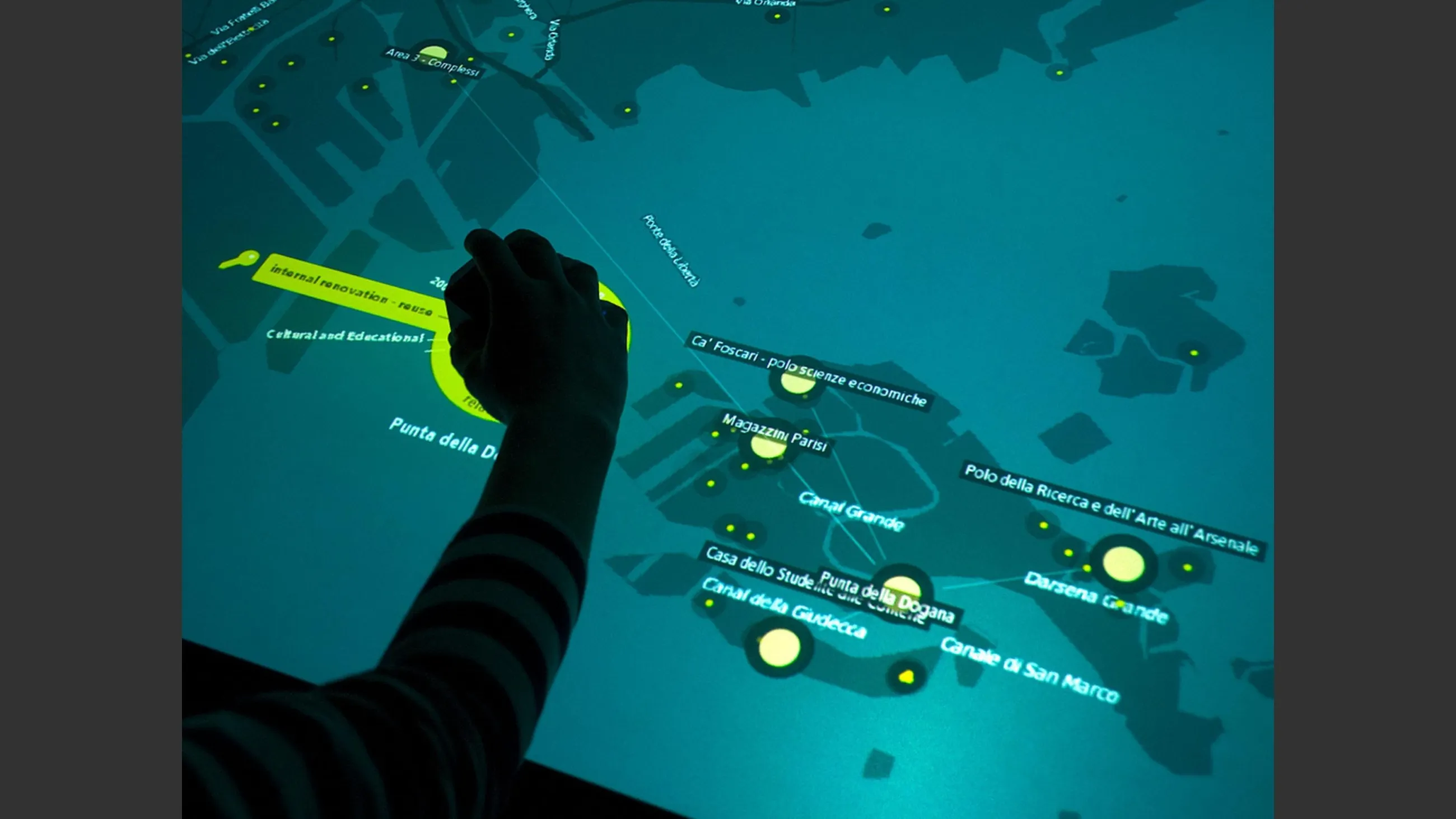Interaction Design Lab (IDL)

The Interaction Design Lab (IDL) sees itself as a contact point for interaction design experts from industry and science, both nationally and internationally. As an interface between education, research and development, it facilitates a transfer of technology, design and knowledge and offers space for multidisciplinary projects. The Interaction Design Lab bundles research interests and competences in the field of interactive systems and applications from the design sector. We see ourselves as a partner for business and research to drive the initialisation of innovative and forward-looking projects.
Interaction design
The Interaction Design Lab (IDL) focuses on the investigation of the special needs of humans at the human-machine interface as well as human-machine interaction. The focus is on overcoming the design challenges with regard to the physical, psychological and emotional needs of humans.
The work of the Interaction Design Lab aims to solve problems for interactive systems in a multidisciplinary way due to their complexity, with the focus less on a technical than on a design solution approach. For this process, both the classical design disciplines of product and communication design are important, as well as topics of ergonomics, methods of usability research and information architecture.
Until now, in the design of mechanical devices, one could assume a logical interplay between user action and object reaction. But the interaction with a device controlled by a computer is far more complex. The device can react differently depending on the user, action, time and context. A variety of devices can be networked into intelligent systems that perceive, filter, remember, learn, communicate and behave.
One of the main goals of interaction design is to consider humans as users from the beginning of design development in order to create human products that have a high level of aesthetics in presence, interaction and overall experiential value. The same applies to the variety of communication possibilities and services that emerge around these products. Interaction design is therefore not limited to the design of concrete interfaces for computer-based devices, but it also addresses the entire interactive spectrum on a user-specific, economic and cultural level.
Website Interaction Design Lab (IDL)
Range of services
The range of services offered by the Interaction Design Lab includes the research areas listed below and provides information on the technical equipment.
Applied interaction research
Methodical, applied interaction research as well as the development and design of innovative new product concepts are the subject of intended industrial cooperations and partnerships as well as part of the topics of student master's theses within the Interaction Design Lab. Various forms of cooperation in the area of research and development are conceivable.
Commissioned research and development projects
In research and development projects, it is possible to work on specific tasks that may be integrated into a more complex subject area or research project of the Interaction Design Lab. The combined interdisciplinary competences and the specific technical equipment of the lab are used for this. The work is carried out by professors, research assistants and students of the main course and is not bound to the semester planning. The results are usually detailed design concepts or design drafts that are coordinated with the clients according to their resources. Research and development projects can begin with the elaboration of the design strategy or design concepts and extend to the phases of production or implementation and market launch.
Future-oriented research service
A high degree of methodical and intuitive creativity is our greatest potential. It creates new perspectives and exciting ideas in solving complex technology and design problems in the areas of:
- Conducting usability testing and studies, application tests and expert opinions.
- Development of user profiles, usage and application scenarios
- Interaction design and interface design for any software applications, inter- and intranet, application-specific applications and embedded systems, interactive architecture, exhibitions and interactive trade fair construction
- Development of requirements analyses, design guides and interaction guides
- Online market research
- Interactive prototyping
- Training, development and implementation of company-specific qualification programmes
Equipment
The Interaction Design Lab is equipped with eye-tracking and head-tracking systems with analysis and evaluation components for conducting user studies, for taking into account user-specific modes of action and reaction when dealing with interactive surfaces and for integrating spatial movement into the interaction process.
The Game & Interaction research competence includes analysis and production tools for researching existing and developing new games and game concepts. This includes components for game analysis, various interaction units and development environments as well as corresponding software and hardware equipment.
A unique feature is the close networking with the research project Rapid Prototyping of the Product Design programme, which enables the creation of interactive prototypes at a high level.
Project overview
The following major projects are being or have been realised in the IDL:
- MSNI (Mobile Semantic Navigation and Information) is a collaborative project to develop an intelligent, semantically acting integration tool for the situation-based mediation and dissemination of quality-assured, regional information on mobile devices.
- SaSER (Safe and Secure European Routing) investigates the role of data visualisation to ensure the security of complex computer networks.
- Fritzing - a software environment for the documentation and development of physical computing projects.
- Unfolding Map Library - Unfolding is a processing and Java library that enables complex, interactive geovisualisations.
- MACE (Metadata for Architectural Contents in Europe) - user-friendly integration of different data collections.
- Easy2Use - Conception, prototypical realisation and empirical evaluation of a cross-device and cross-service interaction logic for the service landscape of Deutsche Telekom AG.
- Touch it! - Exploring the potential of tactile and haptic interaction in the context of typical mobile phone usage scenarios.
- OLED:OFIES (Organic Light Emitting Diodes - Optimising Form and Interaction for Embedded Systems)
- Interactive whiteboards - Interactive annotation of presentations in the classroom
- Incom - A collaborative knowledge system for teaching and project work at the Design Faculty
- Living in old age - Development of age-appropriate products
- Botany Channel - A PUSH project (PUSH=Public Understanding of Science and Humanities) for the Botany Museum



